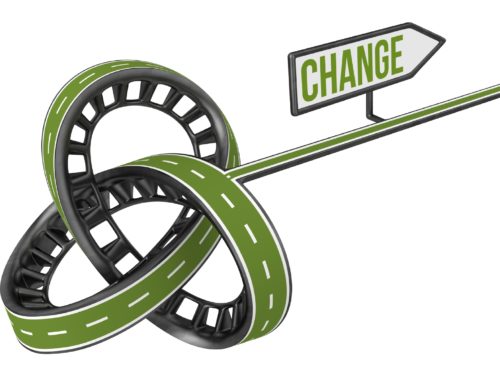In the early days of the personal computer and internet, there were those who understood the tremendous promise that was to come as technology caught up with imagination. Most regular people, on the other hand, found that while many things were different, not much had really changed.
Viewing simple, static websites on the “Internet Superhighway” was cool, and playing those rudimentary games was fun. You still picked up the landline telephone to call the contact number on the website, however. At work, learning to use new computer programs was either exciting or terrifying, but you were still doing basically the same job.
Today’s fascination with digital transformation and disruptive innovation feels the same way. The topics dominate virtually every business conference agenda. The companies disrupting the status quo are the darlings of the business press, but how much has really changed?
Sure, new companies have disrupted their legacy competitors, but that’s not new. Technology and change have always created new market leaders while rendering previous heroes obsolete. Only 60 of the original Fortune 500 list from 1955 were still on the list in 2017. Roughly half of the list in 1999 fell off by 2009.
The reality is that while many things are different as the result of disruptive innovation, not that much has changed. Streaming video basically means that you have more immediate choices and no longer have to walk the vast distance to the mailbox to retrieve a DVD. Ride hailing apps provide convenience and more control over your transportation choices. They are, in the end, just another way to hire someone to drive you from point A to point B.
Likewise, artificial intelligence and big data are making the customer experience faster, easier, and in many cases friendlier than the analog days of human-driven business. Digital transformation and robotics have made delivering products and services more efficient. Both are absolutely necessary in a hyper-competitive world, and for the most part, they are simply tools to improve current business models. It’s different, but it isn’t transformational.
As cool and even necessary as today’s changes are, we haven’t disrupted and transformed enough. Using big data and artificial intelligence to target the ads we see feels like settling for the easy win without substantive changes in the human condition, ending poverty, or figuring out the algorithm for mutual respect. The healthcare system is delivering better, more efficient service to more people, but adult obesity rates continue to climb in the United States. Too many young adults lack the skills to tackle the jobs of today. What confidence is there that the education system will disrupt and transform itself to prepare students for jobs that don’t yet exist?
Fortunately, there was an Internet 2.0 that brought us to where we are today. The growth was enabled by technological advancement, but it—like all transformational change—was powered by people. They were visionaries, killer code writers, and entrepreneurs that saw potential and disrupted the status quo to move us forward. Their personal brilliance aside, the lasting contribution of these pioneers was to infect countless others with the dream of what’s possible.
Dr. Clayton Christensen’s original work defined “disruptive innovation” as a very specific set of steps that companies go through to enter and ultimately dominate a market segment or industry. Today, the word is morphing to become synonymous with change on steroids.
Perhaps that is what Disruption 2.0 and the next stage of digital transformation will look like—big, dramatic, transformative efforts that takes us out of our comfort zones and solve problems that change the world (or at least our part of it) rather than just make things different.
There are signs that the future is quickly approaching. Fortune writers Erika Fry and Sy Mukherjee give us a glimpse of what’s ahead in their April 2018 article “Big Data Meets Biology.” Household names such as Alphabet, Apple, Aetna, and CVS are joining a host of companies that have not yet achieved that status. They are all actively using disruptive technology to change the health of the world.
Healthcare is not the only place where transformative change is on the horizon. Technological advances are very close to allowing us to do virtually anything we can imagine in every industry.
Disruption 2.0 isn’t about the technology, however. It isn’t simply about breaking business models to dominate markets either. It’s about people pursuing big, scary ideas that transform the world not just make it different.
Everyone can play a part. Like the early days of the personal computer and internet, the leaders will be visionaries, risk takers, and geeks and scientists with mad skills. Your role is crucial, too. Challenge your own status quo. Be a curious and critical thinker.
I can’t wait. Are you in?
Randy Pennington is an award-winning author, keynote speaker, and leading authority on helping organizations achieve positive results in a world of accelerating change. To bring Randy to your organization or event, visit www.penningtongroup.com , email info@penningtongroup.com, or call 972.980.9857.





